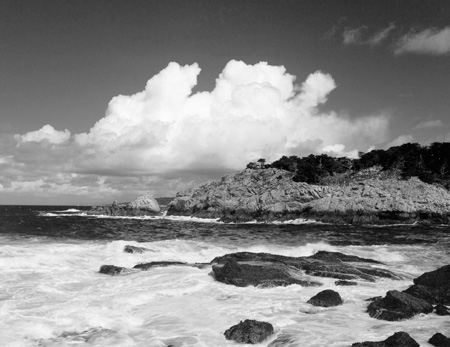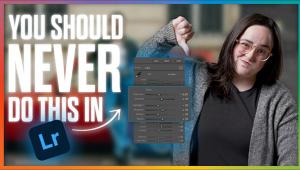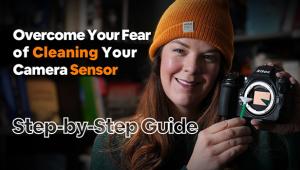Spot Meters
The Ultimate Tool For The Thinking Photographer?
Anyone who knows me recognizes that
I have a thing for light meters. I own, and regularly use, several and have
collected a number of antiques that decorate the shelves of my office. This
obsession started when I was a kid and my dad had a really neat General Electric
light meter with lots and lots of cool looking numbers. Much later, when I became
a serious photographer and began to make my living shooting portraits and commercial
work, I realized that just as there is no universal camera, some light meters
function better than others for a particular application. Studio photographers,
especially those specializing in portraits and product photography, are probably
best served with an incident light meter. On the other hand, fine art photographers
who shoot predominantly landscapes usually prefer the extra control a spot or
narrow angle meter affords.
You may already be conversant with the terminology, styles, and features of
the various light meters but for those of you new to this subject let's
review some of the important points of light meter shopping.
 |
|
|
Meter Types
First, there are two basic types of light meters: incident meters and reflected
meters. Incident meters read the light falling on the subject utilizing a hemispherical
dome. It's the half Ping-Pong ball looking thing you see on incident meters
that integrates the light readings. Reflected light meters have a sensor that
reads the light bouncing off the subject and these can have a wide or narrow
angle of acceptance.
Each meter type has its advantages and disadvantages. With incident meters,
because the dome is three dimensional, the light falling on the subject is averaged,
resulting, most of the time, in an accurate exposure recommendation. Studio
photographers love incident meters due to the ease of comparing multiple lighting
sources, setting lighting ratios, or balancing ambient and flash lighting. Once
the lighting ratios are set a single reading is all that is required to determine
the exposure values.
 |
|
|
However, in situations where the scene before the camera is extraordinary in some way, for example a snow scene or a black sand beach in Hawaii, incident readings could be unreliable. Scenes with predominantly light or dark tones could easily cause overexposure or underexposure. Some photographers eventually learn to recognize these situations and compensate, but most never figure it out and spend their lives bemoaning the photos that "didn't come out." To reiterate, incident meters are very accurate and easy to use over a wide range of subject and lighting conditions, but they can be fooled. And that, my friend, is the reason there are spot meters.
Pick Your Spot
Spot, or narrow acceptance, meters are simply reflected light meters that see
only a small portion of the scene. This narrow angle of acceptance is generally
in the range of 1-5Þ. A standard reflected meter usually has an angle
of acceptance of approximately 30Þ, so you can see that a 1Þ spot
meter is really narrowing down the area of sensitivity considerably. In real
world terms the area read by a 1Þ spot meter at a distance of 20 ft is
approximately 5" square, about the size of a post card.
This selectivity allows the photographer to measure discrete tonalities within
the scene, usually from the camera's position, and base the exposure on
the way he/she wants those tones to reproduce in the final image. After all,
it's all about control isn't it?
 |
|
|
Zone Alert
You've heard about the Zone System, right? Well, you've probably
heard that the Zone System is nearly impossible to understand, requires math
skills just short of Hawkins and Einstein, and that Ansel Adams kept the three
most valuable zones a secret. Not so. First, Adams only kept two zones to himself.
(Sorry, couldn't resist!) In truth, the Zone System can be explained in
one sentence: "Expose for the shadows and develop for the highlights."
That's the whole premise of the Zone System. Exposing for the shadows
is the part that is relevant at the moment.
- Log in or register to post comments

































